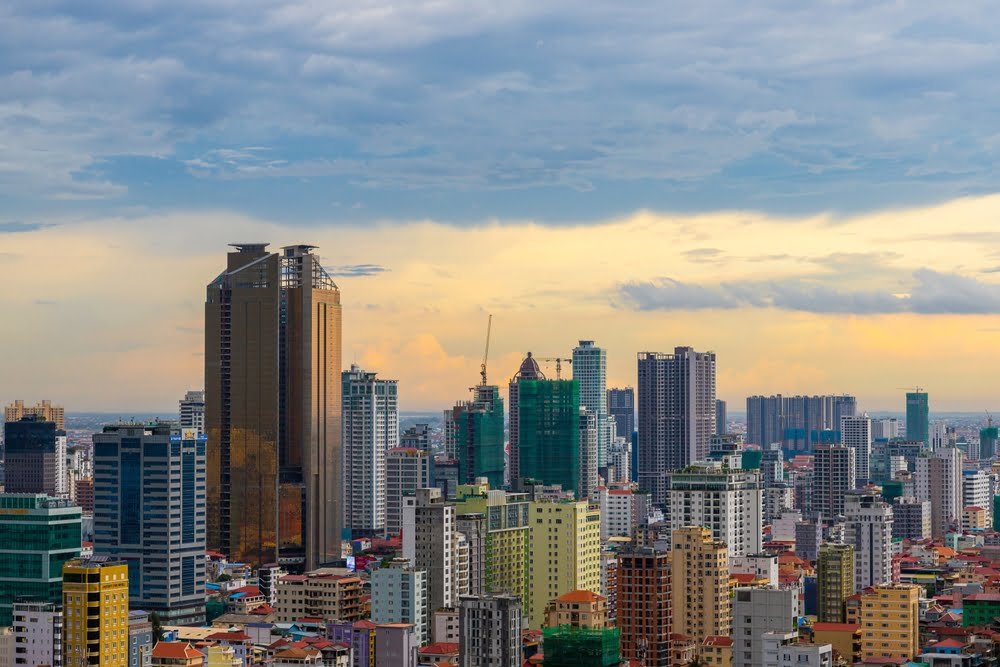As Cambodia approaches 2024, the construction market enters a really defining phase in its development—a combination of recovery and transformation. The Cambodian Construction Market Trends 2024 reveal that after several really difficult years, this sector is learning to live with new realities while seizing new-creation opportunities.
This article sets out to explore the fundamental trends of industry development: technological changes, ecological awareness, and the impact of government policies on business and investment potential in Cambodia’s Construction Industry for 2024.
Overview of the Current Cambodian Construction Market
The Cambodian building market was impressive and had an estimated value of approximately $11.6 billion in 2023. The market is expected to show an AAGR of more than 6% during the period 2025-2028, with huge investments in infrastructure, renewable energy, and low-cost housing, among others. On the other hand, the high-end real estate segment targeting non-residents has witnessed sharp declines, reflecting the scenario of changing market dynamism.
Key Trends Shaping the Market
1. Integration of Technologies
Advanced technologies are on the list of major tendencies that reshape the Cambodian landscape. It is Building Information Modelling, site surveying with drones, and construction management software that is increasingly being implemented. All these innovations provide enhancements of project efficiency, cost reduction, and overall improvement in management. This, in turn, enables construction firms, by means of new technologies, to streamline operations, minimize risks, and execute projects on time and on budget.
Moreover, the sudden and rapid inclusions of smart construction practices, along with the use of AI and machine learning, are changing the method of planning and executing projects. These technologies can grasp predictive analytics to foresee any challenge coming and optimize resource allocation for betterment of project results.
2. Emphasis on Sustainability
It’s not a buzzword anymore, but rather a common concept in the construction industry in Cambodia. In fact, with the growing environmental awareness around the globe, the demand for eco-friendly construction practices and materials also grows. Developers are now focusing on adapting the principles of sustainable design into their project, adding renewable sources of energy and energy-efficient systems.
The movement towards sustainable development is driven more by regulating frameworks in many countries that favor green building, rather than consumer preference. Projects with a focus on sustainability are likely to attract great investment from both domestic and international investors who would want to associate themselves with environmentally friendly causes.
3. Infrastructure Development and Government Policies
Government policy is very important to determine the scenario of the construction sector. The Cambodian government has been encouraging infrastructure development, realizing its significance in driving economic progress. Major projects on transportation, energy, and urban development are in progress, thus creating an investment-friendly environment.
With the recent policy changes that have expanded foreign ownership rights, the Cambodian market is now a more attractive option for foreign investors . In this sense, when foreign capital begins to pour into the market, this is probably going to stimulate growth in a number of sectors, especially in infrastructure and residential construction.
4. Market Dynamics and Investment Opportunities

While the high-end real estate market is facing challenges, there is still optimism for affordable housing and commercial projects. The growing middle class and fast urbanization are driving demand for housing in the affordable category. The National Bank of Cambodia predicts that domestic demand in the housing sector should improve gradually, thus providing a great opportunity for those developers whose target market is the low-income segment.
Besides, the growth of Cambodia’s economy is estimated to be about 6.4%, hence driving construction for all sectors. This economic growth may, therefore, be expected to have a multiplier effect through increased job opportunities and an improvement in general market confidence fueled by investment in infrastructure.
The Cambodian Construction Market Trends 2024 show how this industry is negotiating a challenging and exciting environment. The construction sector is well-positioned for cautious optimism because of its strong emphasis on sustainability, technology integration, and pro-business policies from the government. Stakeholders need to be proactive and flexible as the market changes in order to take advantage of new trends and promote long-term, steady growth. The future of Cambodia’s construction industry looks promising, and those who embrace innovation and sustainability will be at the forefront of this transformation.
